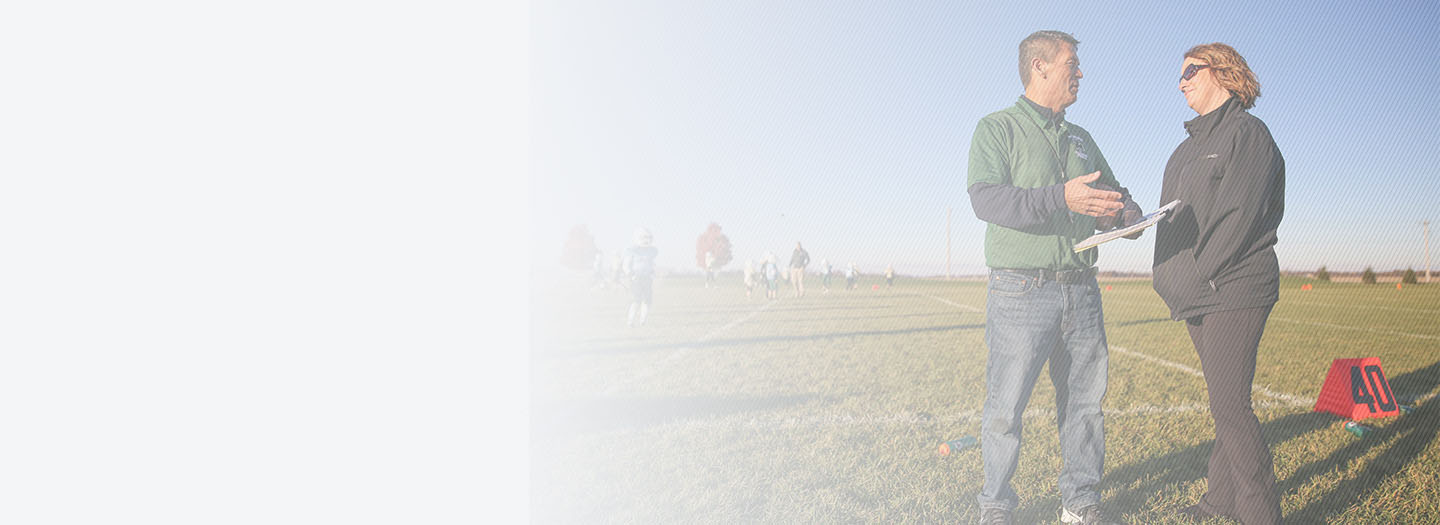
MORE OPTIONS
USA TACKLETM & USA FLAGTM
GAME TYPES & CATEGORIES
From flag to tackle, there are more paths to play football than ever before. Keep reading to see which ones are best for your athlete or organization.
Football for All®
There are lots of ways to play this great game. Some athletes are ready to jump in and stick with tackle or flag the rest of their life, while others need a step-by-step approach that bridges one way to play to another.
The Football Development Model makes it easier to get started. No matter your athlete's age, skill level or way they want to play, there's an option for them that meets them where they're comfortable.
These options are called Game Types and Game Categories. These give organizations and athletes new entry-points to the game along with a gradual progression of added complexity and competition. This approach offers many paths to play, many ways to develop and many reasons to stick with the game.
WHY WE BELIEVE
MORE ENTRY POINTS
![]()
Football is America's favorite sport, but it's played in a lot of different ways.
Organizations that implement the model and these Game Types are offering more options for the athletes in their community and are providing athletes with more reasons to stick with the game.
INFORMED DECISIONS

Football can seem complicated for athletes and their parents. These options simplify the path and help organizations build fun and supportive environments.
With differing Levels of Contact and more Game Types, parents can pick the right entry point for their athlete.
LESS CONTACT
![]()
When organizations offer this step-by-step approach to playing the game, athletes will naturally experience less contact.
Overall, the Game Types that makeup the Football Development Model are designed to be a smarter and safer way to play and teach the game.
SKILL PROGRESSION
![]()
By taking a step-by-step approach to development for every football skill, proper fundamentals become easier to teach and learn.
Through our Game Types and resources, skills can be taught and learned in a way that is developmentally appropriate for the athlete, improving their understanding.

SPOTLIGHT: CREATING A BRIDGE FROM FLAG TO TACKLE
Helping athletes progress from flag to tackle hasn't been straight forward. The new model bridges the divide - whether that's through coach education or ways to play.
Let's focus on the Game Category called Limited Contact. It acts as a bridge
from flag to full contact, played on both smaller and full-sized fields. Wearing helmets and shoulder pads, plus TackleBar® harnesses or flag belts, athletes learn how to block, track and engage without purposefully going to the ground.
CASE STUDY: See how a league in Indiana bridged the divide, including parent and administrator reactions
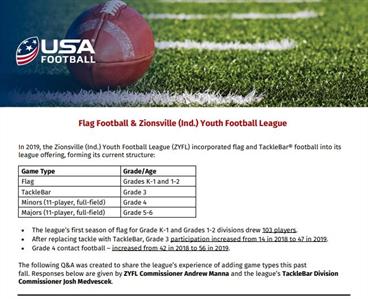
GAME CATEGORIES
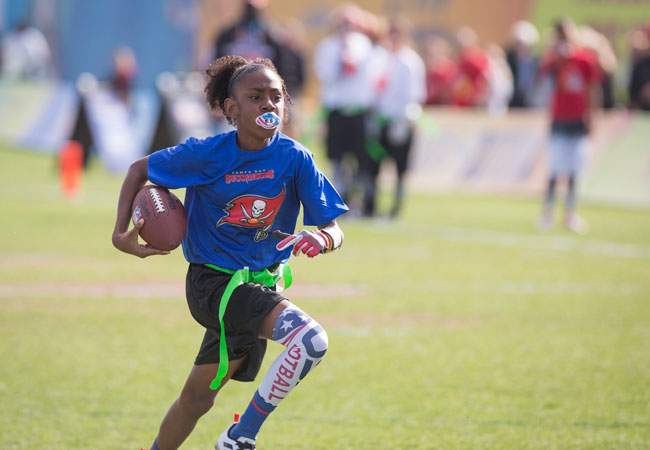
USA FLAGTM
NON-CONTACT
Athletes can experience many of the positions and skills of football in Non-Contact, often on smaller and shorter fields with fewer athletes. Our resources help coaches teach proper tracking skills to help athletes excel while preparing for versions of the game with more contact later in life.
USA TACKLETM
LIMITED CONTACT
The new principles of Limited Contact introduce player-to-player contact in a progressive way through equipment options such as TackleBar or Padded Flag, all while keeping athletes on their feet.
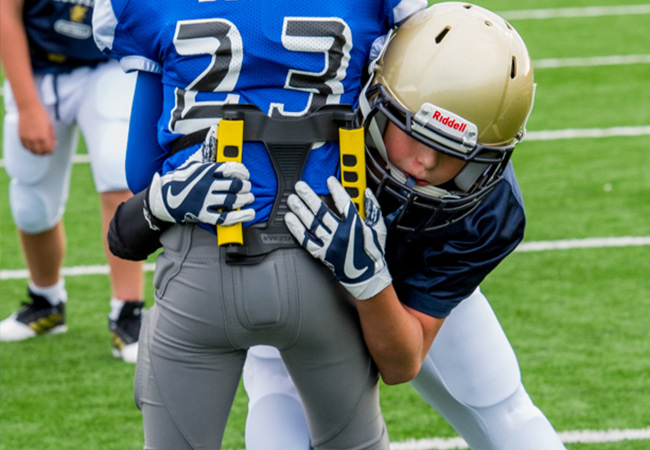
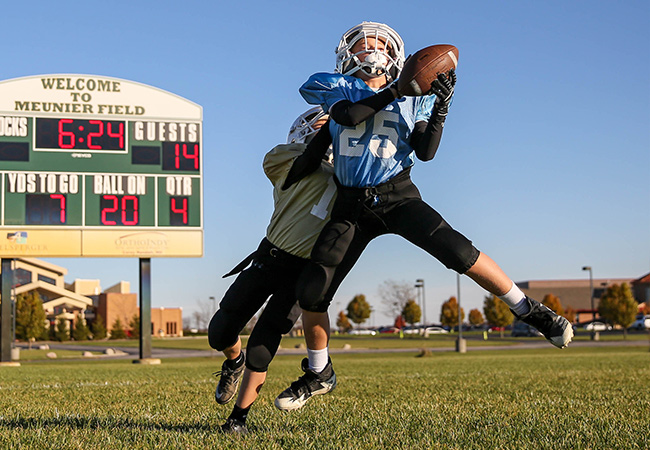
USA TACKLETM
CONTACT
Contact football can be played in many ways - from the game we see on Sundays to small-sided games with fewer athletes.

MIKE LAFLEUR ON PROGRESSING THROUGH GAME TYPES
CHRIS SNYDER ON SUCCESS WITH GAME TYPE PROGRESSIONS
